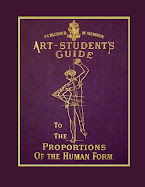 Anthropometry (Greek άνθρωπος, man, and μέτρον, measure), refers to the measurement of the individual to understand human physical variation.
Anthropometry (Greek άνθρωπος, man, and μέτρον, measure), refers to the measurement of the individual to understand human physical variation.From Wikipedia:
There were eleven measurements:
Height
Stretch: Length of body from left shoulder to right middle finger when arm is raised
Bust: Length of torso from head to seat, taken when seated
Length of head: Crown to forehead
Width of head: Temple to temple
Length of right ear
Length of left foot
Length of left middle finger
Length of left cubit: Elbow to tip of middle finger
Width of cheeks
This is a link to a page about measurement techniques: Anthropometric Measuring and Fundamentals.

It was used first to identify criminals, but was such a complex system that it eventually gave way to fingerprinting. Link to a page with a description of Alphonse Bertillon' measurement technique. Link to a standard anthropometry card with Alphonse Bertillon;s photograph. Syracuse University forensics course page with samples of anthropometry cards. More Bertillon cards at the National Institute of Health. Link to a Rutgers University page describing facial measurement techniques.
Later anthropologists used it to classify the races - and as a result popularized a kind of scientific racism. (see a post about Petrus Camper - How to Draw the Head)
Later anthropologists used it to classify the races - and as a result popularized a kind of scientific racism. (see a post about Petrus Camper - How to Draw the Head)
More recently it is used in clothing manufacture and footwear. This page has an example from NASA which shows its use in designing space suits.
Alphonse Bertillon: Father of Scientific Detection
Signaletic Instructions Including the Theory and Practice of Anthropometrical Identification
Les races sauvages (French Edition)
Identification Anthropométrique: Instructions Signalétiques (French Edition)
Alphonse Bertillon's Instructions For Taking Descriptions For The Identification Of Criminals And Others, By Means Of Anthropometric Indications (1889)
Alphonse Bertillon: Father of Scientific Detection
Signaletic Instructions Including the Theory and Practice of Anthropometrical Identification
Les races sauvages (French Edition)
Identification Anthropométrique: Instructions Signalétiques (French Edition)
Alphonse Bertillon's Instructions For Taking Descriptions For The Identification Of Criminals And Others, By Means Of Anthropometric Indications (1889)
Anthropometric Methods: Designing to Fit the Human Body (Monographs in Human Factors and Ergonomics)

John Barrington wrote a book about anthropometry in the 1950s, Anthropometry and Anatomy, for Artists With Over 700 Illustrations




















No comments:
Post a Comment